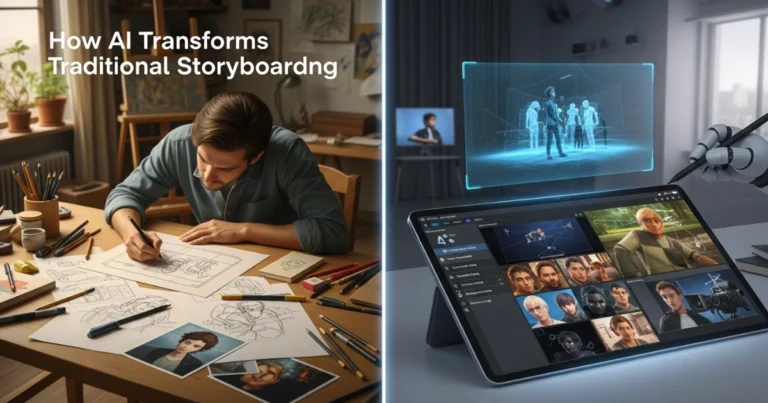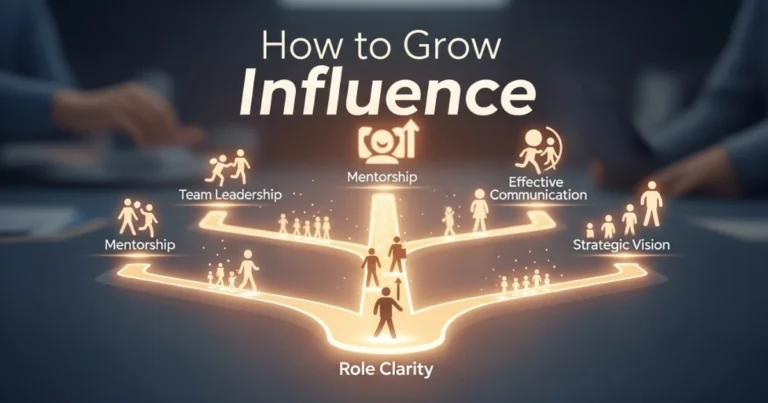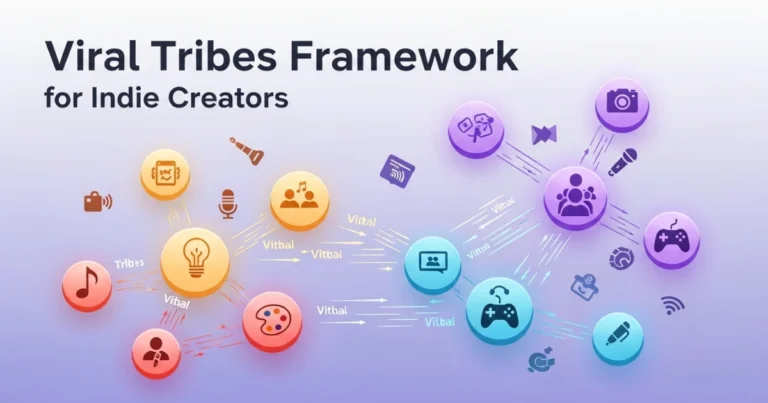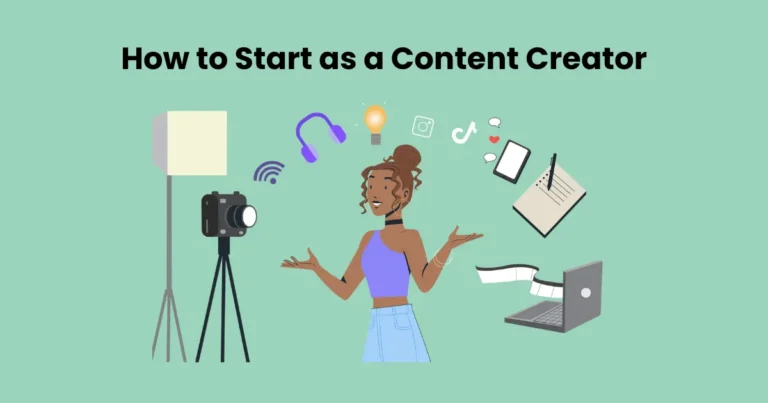Creating Personalized Videos with AI

Contents
- 1 What Are Personalized Videos?
- 2 Why AI Is Transforming Video Personalization
- 3 Benefits of Creating Personalized Videos with AI
- 4 Key AI Tools Used for Personalized Video Creation
- 5 Step-by-Step Guide to Creating Personalized Videos with AI
- 6 Best Practices to Maximize Engagement
- 7 Future Trends in AI Video Personalization
- 7.1 1. Real-Time Personalization
- 7.2 2. Integration with Augmented and Virtual Reality
- 7.3 3. Hyper-Automation of the Creative Process
- 7.4 4. Emotion-Driven Customization
- 7.5 5. Deeper CRM and AI Integration
- 7.6 6. Voice Cloning and Deepfake Personalization
- 7.7 7. Enhanced Data Privacy and Ethical Standards
- 7.8 Conclusion
In the evolving landscape of digital content, businesses and creators have embraced creating personalized videos with AI as a powerful approach to engage audiences more effectively. By leveraging artificial intelligence, they can create personalized videos faster, more efficiently, and at scale. Instead of producing one-size-fits-all videos, AI automatically tailors content to individual viewers, using data such as names, interests, and behavioral patterns.
Through AI, dynamic video elements can be generated with minimal manual effort. Moreover, scripts are written, scenes selected, and voices matched all with the help of smart algorithms. Because of this, brands, educators, and marketers are increasingly turning to AI tools to deliver customized messages that resonate on a deeper level. As a result, viewer retention, click-through rates, and overall user satisfaction are significantly improved.
In this guide, you will discover how AI-driven video personalization works, the tools involved, its many advantages, and the key steps to get started. We will also explore future trends and common challenges to provide you with a complete overview.
What Are Personalized Videos?
Personalized videos are digital video content tailored to individual viewers by incorporating unique, data-driven elements such as the viewer’s name, location, purchase history, or behavioral data. Instead of delivering a generic message, creators modify the content dynamically to suit the preferences or actions of each person.
Typically, personalized videos are created using pre-designed templates where variable data points are inserted automatically. For example, in a marketing campaign, a video may greet the viewer by name, reference their last interaction with the brand, or suggest products based on their previous purchases.
These videos can be delivered through multiple channels including emails, landing pages, mobile apps, or even social media. Often, they are used in:
- Sales and onboarding videos to build rapport quickly
- Customer service content to address user-specific issues
- Educational content to improve learning experiences
- Product recommendations to increase conversions
By offering a custom experience, creating personalized videos with AI ensures content feels more relevant, increasing the chances of viewer engagement and action.
Why AI Is Transforming Video Personalization
Video personalization has existed for years, but it was traditionally manual, expensive, and limited in scale. However, a major shift has been driven by artificial intelligence redefining how personalized videos are produced, delivered, and optimized. Now, creating personalized videos with AI is not only more accessible but also far more intelligent and scalable.
Thanks to advancements in machine learning, natural language processing, and computer vision, personalization can be fully automated. AI analyzes vast amounts of user data in real time from browsing history to geographic location and uses it to craft content that feels tailor-made for the viewer.
For instance, AI can automatically generate scripts, synthesize voiceovers using AI voices, and select or edit scenes without human intervention. Additionally, adaptive content can render instantly based on how viewers interact with a video, enabling real-time customization.
Another key factor is speed. Content that once took days to produce can now be generated in minutes. And with cloud-based AI tools, global deployment is effortless. Therefore, businesses can efficiently target different segments of their audience without needing massive production budgets or time-consuming editing.
Ultimately, AI transforms personalization from a static feature into a dynamic, data-responsive strategy one that delivers better user experiences and measurable results.
Benefits of Creating Personalized Videos with AI
When it comes to digital engagement, few strategies are as powerful as creating personalized videos with AI. Not only does this approach save time and resources, but it also significantly boosts interaction, retention, and conversion rates. Let’s explore the key advantages:

1. Massive Scalability
With AI, creators can produce personalized videos in bulk, something nearly impossible with manual methods. Using data automation and smart rendering engines, they can generate thousands of unique videos simultaneously.
2. Time Efficiency
By automating many repetitive tasks, AI makes video production incredibly fast. Intelligent algorithms write scripts, select scenes, and complete edits in a fraction of the time.
3. Cost Reduction
Traditionally, video production required large budgets for scripting, voiceover, and editing. However, when creators use AI to make personalized videos, machines handle these tasks, significantly reducing labor costs.
4. Data-Driven Customization
AI uses real-time data to shape content. AI analyzes viewer behavior, preferences, and demographics to produce videos that feel directly relevant to each individual, increasing engagement and trust.
5. Increased Engagement and Conversions
Personalized videos that speak directly to a user’s needs or interests dramatically improve metrics like click-through rates, watch time, and sales conversions.
6. Consistency Across Campaigns
AI ensures branding, tone, and messaging stay consistent across thousands of video variations. This level of uniformity would be nearly impossible to achieve manually.
7. Real-Time Updates and A/B Testing
Since AI automatically generates and modifies videos, marketers can run A/B tests or update messaging on the fly without starting from scratch.
Clearly, creating personalized vides with AI offers a strategic advantage in today’s content-saturated digital space. Not only is it more efficient, but it also allows for deeper, more meaningful customer engagement.
Key AI Tools Used for Personalized Video Creation
To streamline the process of creating personalized videos with AI, a wide range of advanced tools and platforms have been developed. These tools combine machine learning, automation, and user data analysis to generate engaging, customized content at scale. Below are some of the most widely used and effective AI tools available today:

1. Synthesia
Used for: AI-generated avatars, voiceovers, and text-to-video conversion.
With Synthesia, human-like presenters can be created simply by inputting text, making it ideal for training videos, onboarding, or marketing. Multiple language options and facial expressions enhance personalization.
2. Pictory
Used for: Converting scripts or blog posts into engaging short videos.
Pictory utilizes AI to extract key points, select visuals, and generate narration. When creating personalized videos with AI, this tool is excellent for repurposing long-form content.
3. Rephrase.ai
Used for: Personalized sales and marketing videos at scale.
Rephrase.ai allows brands to send custom videos that include names, company references, or localized information automatically embedded using user data.
4. Vidyard
Used for: Personalized video messaging in sales and customer service.
Vidyard lets sales teams create quick, AI-assisted video messages, embedding individual customer details and real-time data to drive higher response rates.
5. Elai.io
Used for: AI video presentations using customizable avatars.
Elai.io supports the generation of scalable video content without actors, studios, or editing teams, perfect for businesses with global audiences.
6. Lumen5
Used for: Turning text into engaging video content using AI.
Lumen5 uses natural language processing and machine learning to match written content with relevant visuals, transitions, and music.
These tools make creatig personalized videos with AI far more accessible and affordable than traditional production methods. By automating time-consuming tasks, they free up creative energy while delivering professional-grade results quickly.
Step-by-Step Guide to Creating Personalized Videos with AI
While the concept might seem complex at first, creating personalized videos with AI becomes quite manageable when broken into steps. The following guide outlines a practical workflow that anyone from marketers to educators can follow to develop dynamic, engaging video content tailored to individual viewers.

1: Define Your Objective and Audience
Before any production begins, the goal must be clearly defined. Are you creating videos for sales outreach, customer onboarding, or personalized education? Simultaneously, the target audience should be segmented based on criteria like behavior, demographics, or interests. This ensures personalization is both relevant and effective.
2: Collect and Organize User Data
To personalize effectively, you must gather accurate data. Information such as the user’s name, location, past purchases, or interaction history can be pulled from CRM systems, email platforms, or website analytics. Once you collect the data, structure it for integration into video templates.
3: Choose an AI Video Creation Tool
Select a tool that aligns with your goals. As mentioned earlier, platforms like Synthesia, Pictory, or Rephrase.ai are popular choices. Each tool offers different levels of personalization from voiceovers and avatars to dynamic text and imagery.
4: Create a Video Template
A base video is created using your chosen AI platform. This template will include placeholders for personalized elements like names, company logos, product recommendations, or spoken greetings. Backgrounds, animations, and branding elements should be included here as well.
5: Integrate the Data
You upload or connect user data to the platform, often through CSV files or API integrations. This step ensures that each video instance automatically generates with personalized information, reducing the need for manual editing.
6: Generate and Review Videos
Once you link the data and templates, you can generate the videos. In many tools, this happens with a single click. It’s important to review several versions to ensure the personalization has been applied correctly and that branding remains consistent.
7: Distribute Videos to Targeted Users
After final approval, the personalized videos are delivered to users via email, social media, SMS, or embedded directly on websites. Timing and platform choice should align with where your audience is most active.
8: Analyze Performance and Optimize
Post-launch, engagement metrics such as click-through rates, watch time, and conversions should be analyzed. AI tools often provide built-in analytics dashboards that help you track performance and make adjustments for future campaigns.
Through this methodical approach, creting personalized videos with AI becomes a seamless process allowing brands to deliver content that feels personal, timely, and impactful at scale.
Best Practices to Maximize Engagement
Creating personalized videos with AI offers incredible potential, but you can only maximize engagement by applying the right strategies. Without proper planning, even the most advanced video may fall flat. To ensure your personalized content resonates with viewers, implement the following best practices across all stages of production and distribution.

1. Keep It Short and Focused
Time is precious. Videos that are under 90 seconds tend to perform best, especially on mobile and social platforms. Include only essential information and avoid unnecessary visuals or dialogue to maintain viewer attention.
2. Personalize Early
The viewer’s name, company, or other personalized detail should appear within the first few seconds. By doing so, you capture attention immediately and establish a sense of connection from the beginning. AI tools seamlessly embed this personalization into intros and greetings.
3. Match Tone and Style to Your Audience
Personalized content should feel native to the audience’s expectations. For instance, B2B videos may benefit from a formal tone and clear data visuals, while B2C videos can be more casual and emotionally driven. When creating personalized videos with AI, choose avatars, music, and scripts that reflect the preferences of each segment.
4. Include a Clear Call-to-Action (CTA)
Every video should guide the viewer toward a specific action whether it’s signing up, scheduling a call, or watching another video. Clearly state the CTA both visually and verbally, ideally personalizing it based on the viewer’s journey or previous interactions.
5. Optimize for Mobile and Email
A large percentage of videos will be viewed on smartphones or through email campaigns. Therefore, videos must load quickly, display well in vertical format, and support autoplay with subtitles. These adjustments are easily made using most AI platforms.
6. Leverage A/B Testing
AI makes it easy to test different variations of personalized content. Run multiple versions of videos with slightly altered messaging or visuals, then use performance analytics to identify which format leads to higher engagement or conversions.
7. Analyze and Iterate Continuously
Engagement doesn’t end at distribution. Monitor viewer metrics regularly. If drop-off rates are high at a particular timestamp, shorten or restructure the script or visuals. Thanks to automation, you can quickly generate new versions and re-deploy them.
When applied consistently, these best practice ensure that creating personalized videos with AI doesn’t just feel innovative it becomes a powerful driver of user interaction, brand loyalty, and conversion success.
Future Trends in AI Video Personalization
As technology advances at an unprecedented pace, creating personalized videos with AI will become even more dynamic and intelligent. With better algorithms, real-time data integration, and immersive experiences, the future will introduce exciting possibilities that will redefine how we produce and consume personalized content.

1. Real-Time Personalization
Soon, AI will personalize videos in real time, adjusting elements like language, product recommendations, or visuals as a user actively engages. Content will shape itself based on user behavior in the moment, making interactions feel even more personal and relevant.
2. Integration with Augmented and Virtual Reality
Personalized videos will no longer be limited to 2D formats. AI will enable the generation of individualized experiences in AR and VR environments. For example, users could walk through a virtual showroom where each product and message is tailored to their preferences and past behaviors.
3. Hyper-Automation of the Creative Process
The creative process will become even more automated. AI will generate scripts, voices, music, and animations entirely based on a single prompt or data set. As a result, creating personalized videos with AI will require less human intervention and become scalable even for small businesses.
4. Emotion-Driven Customization
AI will become more adept at reading user emotions through facial expressions, tone of voice, or engagement patterns. This will allow videos to be modified based on the viewer’s mood, increasing empathy and connection in messaging.
5. Deeper CRM and AI Integration
Customer Relationship Management systems will integrate more tightly with AI video tools. Automated workflows will instantly create and send videos after specific customer actions, such as completing a purchase or abandoning a cart, without any manual setup.
6. Voice Cloning and Deepfake Personalization
While controversial, these technologies are likely to become more sophisticated and widely adopted. AI will clone spokespersons or influencers to deliver personalized messages in a hyper-realistic manner, making brand communication appear human even without any recording.
7. Enhanced Data Privacy and Ethical Standards
As personalized AI content becomes more advanced, stronger data regulations and ethical standards will be implemented. Transparency, consent, and data protection will become central in the creation and distribution of AI-powered videos.
Clearly, the landscape of creating personalized videos with AI is evlving quickly. With each new advancement, brands and creators will gain more power to engage audiences in ways that are not only efficient but also genuinely meaningful and interactive.
Conclusion
In today’s competitive digital landscape, personalization is no longer a luxury it is an expectation. That’s why creating personalized videos with AI has emerged as a transformative strategy for businesses, educators, and content creators alike. From increasing engagement rates to streamlining production processes, AI-powered tools are reshaping the way video content is crafted and delivered.
Moreover, with continued advancements in real-time data processing, automation, and emotional intelligence, the potential of AI in personalized video creation is just beginning to unfold. By following best practices, addressing limitations, and staying ahead of emerging trends, anyone can harness this powerful technology to deliver more meaningful, individualized viewer experiences. Ultimately, those who invest in creating personalized videos with AI today will be better positioned to connect with their audiences tomorrow faster, smarter, and more effectively than ever before.






